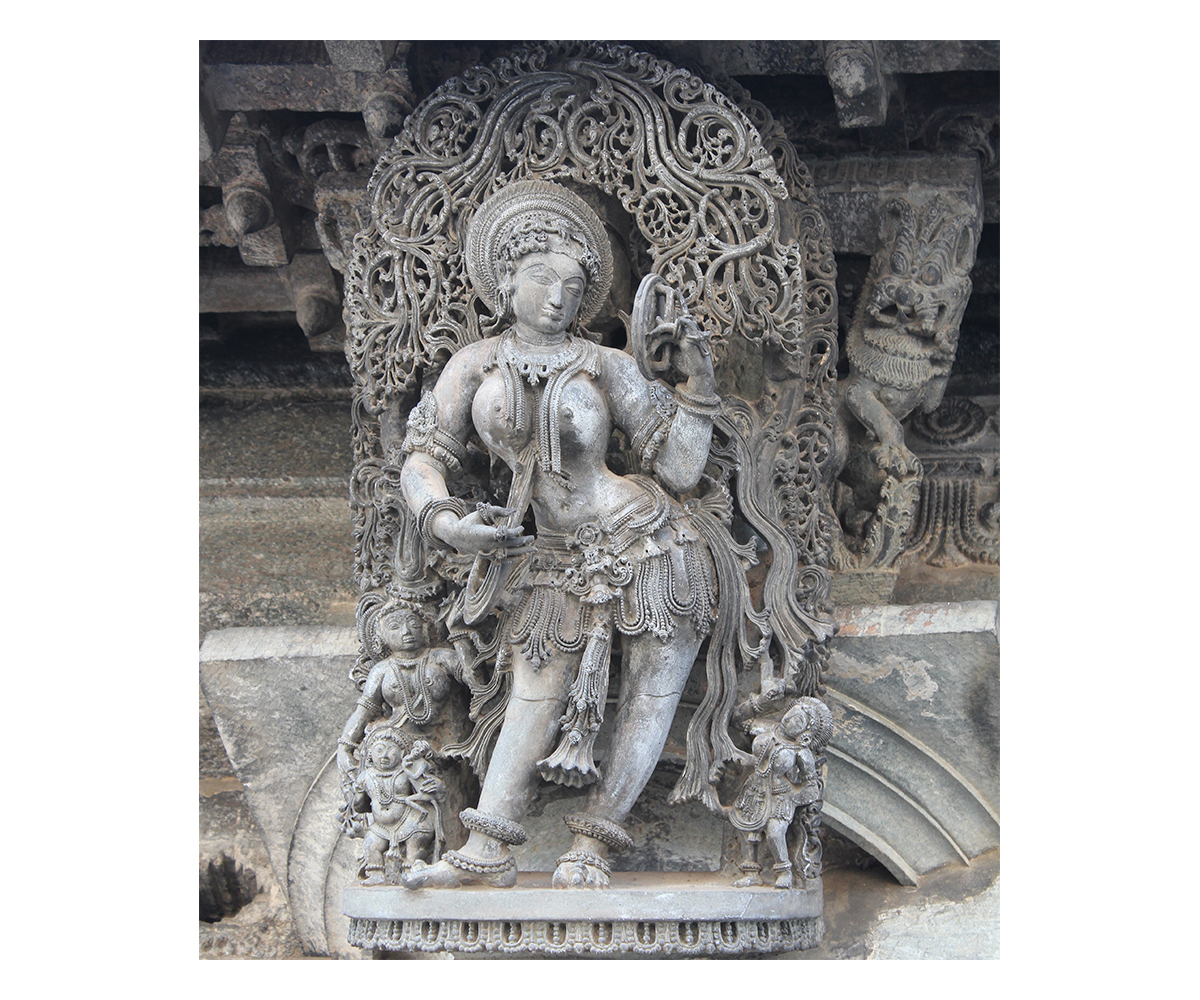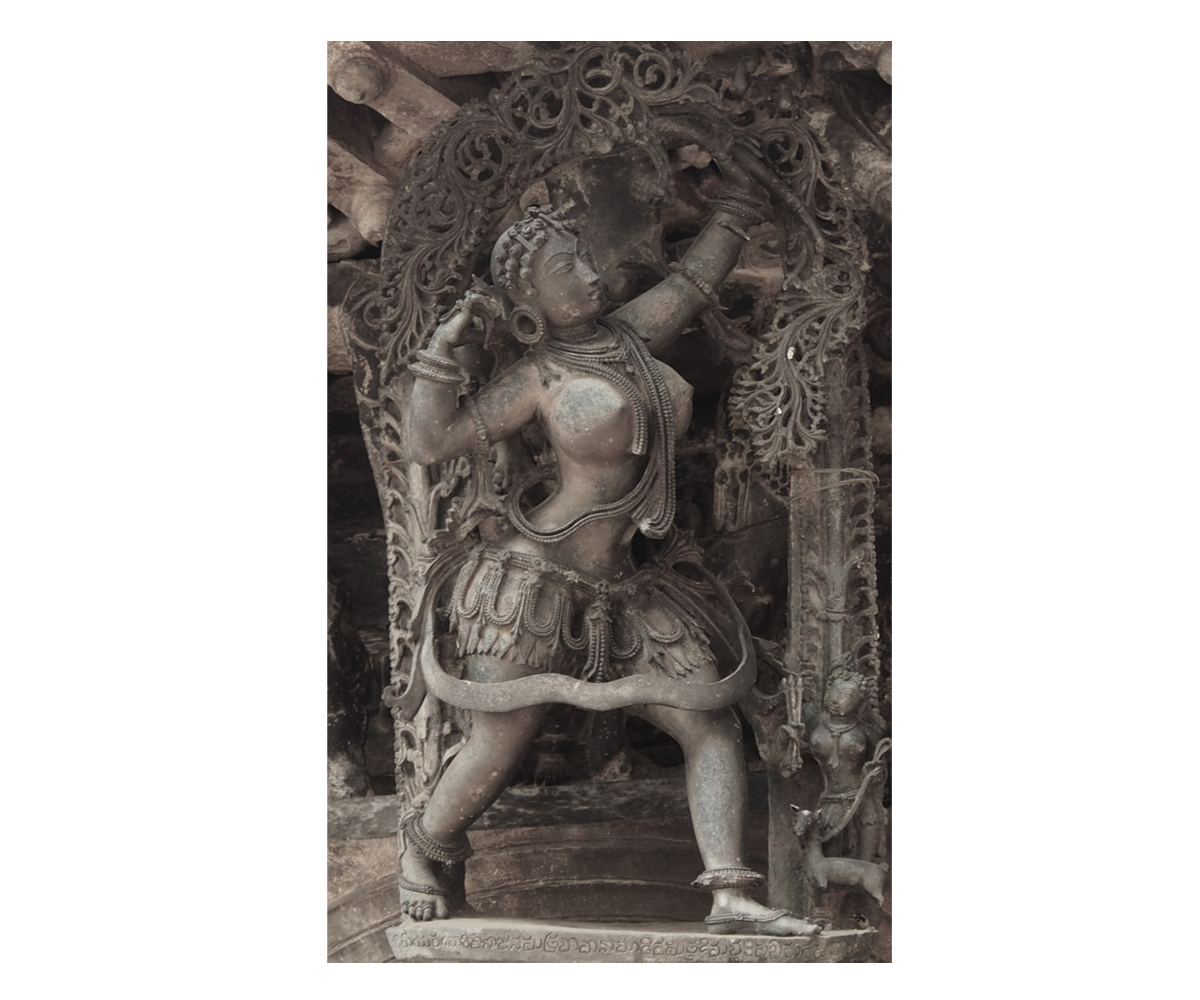ARTICLE
Chavana
Active in the early twelfth century, Chavana was a master sculptor working for the Hoysala court. With his father, the master sculptor Dasoja, Chavana is known for his work on the decorative bracket figures or madanikas at the Chennakeshava temple, Belur in Karnataka, India.
Chavana hailed from the village of Balligrama (also known as Balligamve, now Balligave, in Shivamogga district, Karnataka), which he references in an inscription where he calls himself a ‘bee at the lotus feet of the god Dharmeshvara of Balligamve’. Balligrama was an important cultural centre in the Western Chalukya kingdom, alongside others such as Lokkigundi, Gadaga and Banavase. In the early twelfth century when temple-building began to be patronised extensively by royal and non-royal figures in the Hoysala kingdom, artists from these centres began migrating to centres such as Belur and Halebeedu to participate in projects like the Chennakeshava temple, Belur and the Hoysaleshvara temple, Halebeedu. Chavana and Dasoja are among several master craftspersons, including Ruvari Mallithamma, who travelled significant distances across the Hoysala kingdom in present-day Karnataka, contributing their expertise and knowledge to the art and architecture of the temples of the period.
There is little information about Chavana apart from his work at the Chennakeshava temple, Belur, where he is thought to have worked for around five years with his father Dasoja before moving to a different site. Here, Chavana contributed four madanika images in the exterior and interior sections of the mandapa, including sculptures of a huntress and a dancer.
Like his father, Chavana was known by different epithets, including Macheharipa birudaruvari Madana Mahesa (‘Shiva to the Cupid of titled sculptors’) and Macheharipa birudaruvari sarabhabherunda (‘Bherunda to the Sarabha of rival sculptors’), likely referring to gandabherunda and the sharabha, mythical beasts in Hindu mythology associated with Vishnu and Shiva, respectively.
There is no available information about Chavana’s work after 1117.
Bibliography
Bose, Kamalika, and George Michell. The Hoysala Legacy: Belur, Halebidu, Somanathapura. Mumbai: Jaico Publishing House, 2019.
Karnataka Through the Ages. Bangalore: Government of Mysore, 1968.
Narasimhachar, R. The Kesava Temple at Belur. Bangalore: Mysore Government Press, 1919.
Settar, S. “The Hoysala Artists (c. 1100–1336).” In Indian Art: Forms, Concerns and Development in Historical Perspective, edited by B. N. Goswamy and Kavita Singh, 181–205. New Delhi: Munshiram Manoharlal Publishers Pvt Ltd, 2000.








